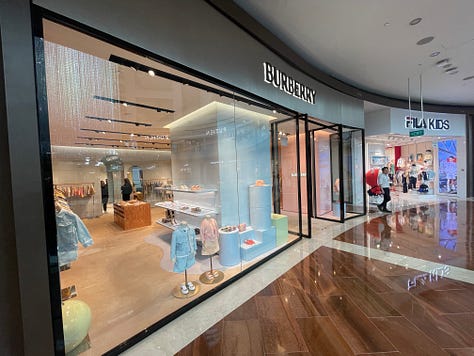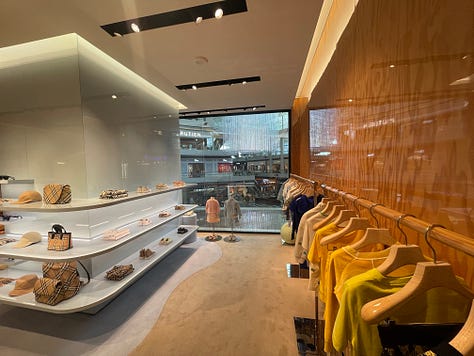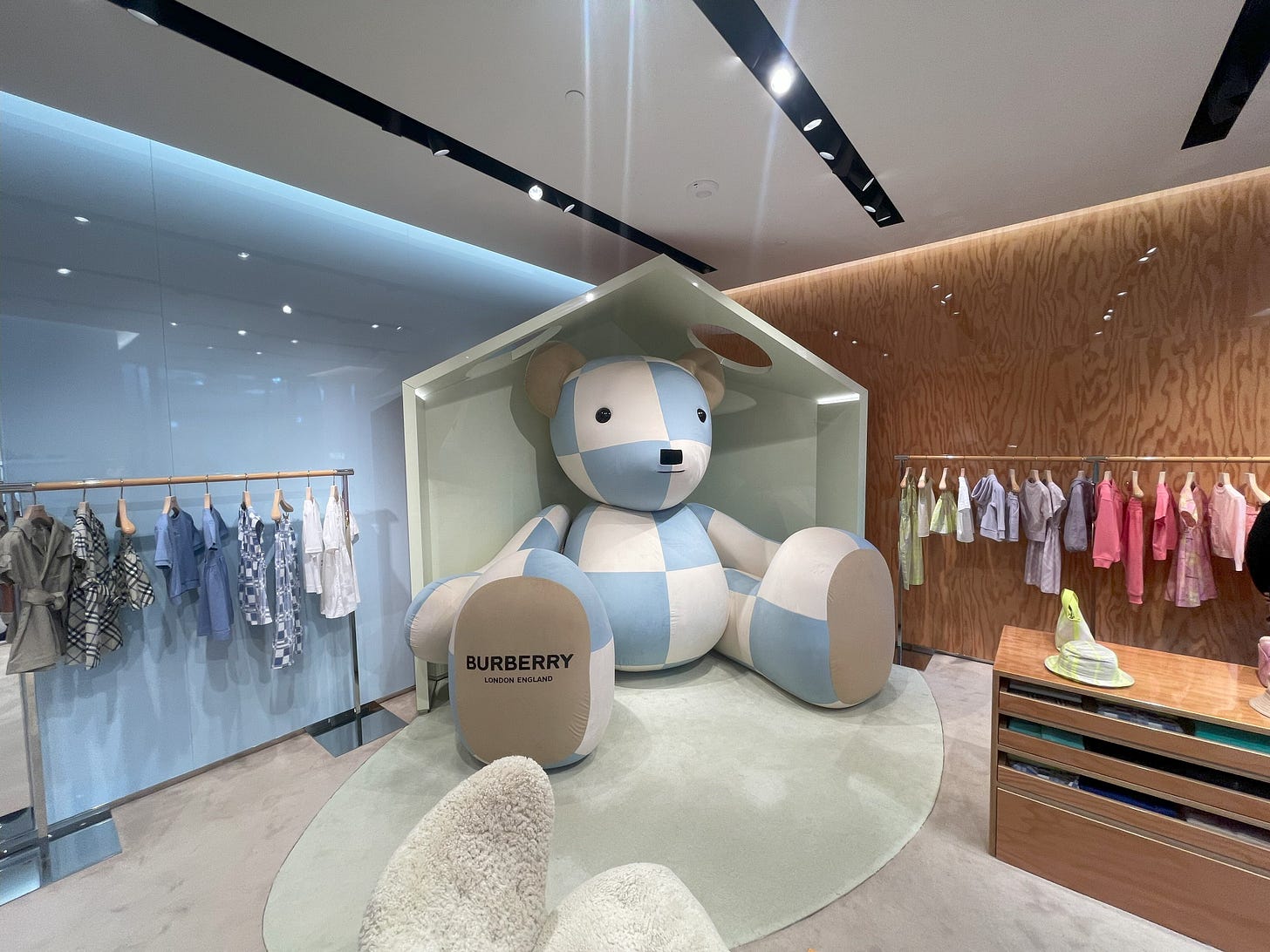The Art of Enchantment
How luxury, nostalgia, and aspiration enchant both parent and child.
I recently found myself entranced by the colour, scale, and materials of this Burberry’s Kids store in Singapore’s Marina Bay Sands shopping mall. It’s as if the design was whispering directly to my inner child. The design taps into every cognitive and emotional bias we unknowingly fall for.
Take PERCEPTION OF QUALITY: we’re hardwired to believe that if a store looks luxurious, the products inside must surely match. It’s the ‘halo effect’ in action. Parents see premium finishes and assume they’re buying the very best for their children—whether that’s true or not is almost irrelevant.
Then there’s SENSORY INFLUENCE. Soft lighting, natural textures, and calming colours do more than look nice—they actually soothe us, lowering stress and making the act of spending money feel… well, almost therapeutic. It’s no coincidence that people tend to browse longer and buy more in spaces that feel like a high-end spa for the soul.
Throw in a bit of NOSTALGIA—a pastel here, a plush oversized teddy bear there—and the store doesn’t just sell clothes; it sells childhood memories wrapped in care and protection. Parents don’t just shop for their kids, they shop to nurture their own past.
Finally, there’s the unsung hero: COGNITIVE LOAD. A well-organised store doesn’t bombard us with choices. Instead, it guides us gently, making decisions feel effortless. The less mental effort it takes, the more likely we are to spend without even noticing.





Now, beyond the parent’s experience, it’s worth remembering that today’s kids are tomorrow’s consumers. In their quest to emulate adulthood, children engage in a fascinating interplay of aspiration and mimicry. The Burberry Kids’ store offers a fascinating case study of this phenomenon. By immersing children in an environment that mirrors adult luxury, the store taps into their desire to grow up faster, positioning itself as a conduit to this ideal. The design isn’t just about aesthetics; it’s a subtle but powerful tool in the kids’ psychological toolkit. It’s as if by shopping in such an environment, children get to taste a bit of adulthood, while parents indulge in their own nostalgic fantasy. The result is a compelling synergy where the store becomes a stage for both youthful aspiration and parental indulgence, perfectly balancing the act of growing up and reliving the past.
My kids are too old to want—or squeeze into—the clothes, but that didn’t stop me from appreciating this masterclass in design psychology, wrapped up into a shopping experience that made the everyday feel extraordinary.


